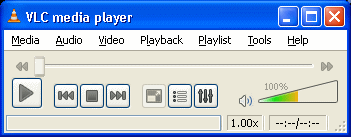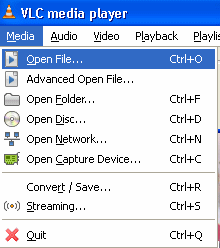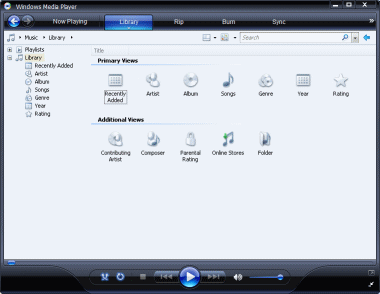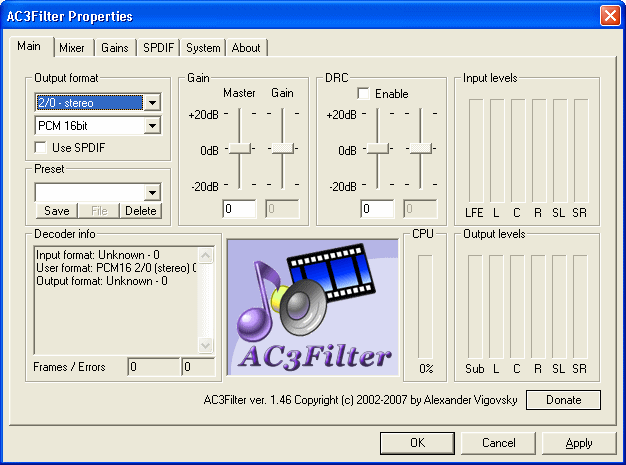How to play XviD files
In this article we will take a look at the options for playing files that have been tagged as "XviD", or that you have determined contain XviD-encoded video. It covers playing the file in many different players with different setups on your computer. XviD is a very popular codec and as such, there are many thousands of files available that contain XviD video.
Introduction to XviD
It is fairly unlikely that you will have a file with the extension.xvid. In all likelihood, your file is named something along the lines of "Filename.XviD.AVI". There are no XviD files per se. Instead there are many different common multimedia file containers that can, and do, store XviD video content. Here are some of the most likely kind of containers you will find, and what you will need to download if you have any of the following file types.
AVI
 AVI is one of the most common multimedia container formats in use on the Internet, and if you have XviD video, then it's very probable that you have an AVI file. AVI stands for stands for Audio Video Interleave. It can store a lot of different kinds of video and audio content. XviD content can be stored in the AVI container, and is often accompanied by either MP3 or AC3 (Dolby Digital) audio. You do not need to download anything additional just yet if you have an AVI file.
AVI is one of the most common multimedia container formats in use on the Internet, and if you have XviD video, then it's very probable that you have an AVI file. AVI stands for stands for Audio Video Interleave. It can store a lot of different kinds of video and audio content. XviD content can be stored in the AVI container, and is often accompanied by either MP3 or AC3 (Dolby Digital) audio. You do not need to download anything additional just yet if you have an AVI file.OGM
 OGM is a multimedia container file based on the OGG container. Essentially it is a hack of OGG to store video content. OGM files often contain XviD video with AC3 or MP3 audio just like AVI, but more often than not, you will find OGG Vorbis audio stored in the OGM container. If you take the Easiest Option in this guide for playback (VLC Media Player), then you won't need to download anything new. However, if you want support in Windows Media Player etc. then please read this guide instead -> How to play OGM files.
OGM is a multimedia container file based on the OGG container. Essentially it is a hack of OGG to store video content. OGM files often contain XviD video with AC3 or MP3 audio just like AVI, but more often than not, you will find OGG Vorbis audio stored in the OGM container. If you take the Easiest Option in this guide for playback (VLC Media Player), then you won't need to download anything new. However, if you want support in Windows Media Player etc. then please read this guide instead -> How to play OGM files.MKV
 MKV is the extension of a Matroska multimedia file. MKV is very popular nowadays but mostly for HD video, meaning it is uncommon to find XviD content in an MKV container, but it does happen. If you have an MKV file, please read this guide instead -> How to play MKV files
MKV is the extension of a Matroska multimedia file. MKV is very popular nowadays but mostly for HD video, meaning it is uncommon to find XviD content in an MKV container, but it does happen. If you have an MKV file, please read this guide instead -> How to play MKV filesEasiest Method - VLC Media Player

The VLC Media Player is by far the easiest solution to playing files with XviD content. It supports many multimedia container formats including AVI, MKV and OGM, and can decode XviD without you needing to install any additional software. Also, it will play AC3, MP3 or OGG Vorbis audio, meaning your audio should definitely work too.
Download VLC Media Player for Windows from: http://www.afterdawn.com/software/video_software/video_players/vlc.cfm
 To open your video file with VLC, run the program after you install it, and click Media. Select Open File and an File Browser will pop up letting you navigate through your hard disk drive for your video file. It will play the file you choose.
To open your video file with VLC, run the program after you install it, and click Media. Select Open File and an File Browser will pop up letting you navigate through your hard disk drive for your video file. It will play the file you choose.You can get the VideoLAN Client Media Player for other operating systems too.
Download VLC for Linux from: http://www.afterdawn.com/software/video_software/video_players/vlc_linux.cfm
Download VLC for Mac from: http://www.afterdawn.com/software/alternative_platforms/mac_software/vlc_for_mac.cfm
Recommended Method - DirectShow with ffdshow

If you want to play XviD content with a DirectShow-based player such as Windows Media Player (shown above), then you need to install a codec or filter for XviD video. This gives you two different options to choose from..
XviD Codec
The word codec is an abbreviation for Coder / Decoder - so you can use it to create and decode XviD video. When you install the XviD codec, it will work with your system so that when you try to play with a DirectShow-based player (Windows Media Player), it will be used to decode the video content, but not the audio. If you try to play your video after installing the XviD codec and you find you have no audio, then check the "What about AC3 Audio?" part of this guide.
Download the XviD Codec from: http://www.afterdawn.com/software/video_software/codecs_and_filters/xvid.cfm
FFDShow
FFDShow is a set of DirectShow filters. We personally believe that installing FFDShow is a must for anybody who watches a lot of video on their computer in a variety of different formats. FFDShow has a wonderful advantage over just installing the XviD codec, it will give you much better odds at having your audio decoded. This is recommended regardless of what else you do.
Download FFDShow from: http://www.afterdawn.com/software/video_software/codecs_and_filters/ffdshow.cfm
What about AC3 Audio?

If you have installed the XviD codec or FFDShow and you find that you have no sound (or perhaps that your surround sound isn't working correctly?), then installing AC3Filter might help. AC3Filter is a DirectShow filter for AC3 (Dolby Digital) audio. It will allow you to change its configuration by the Start Menu so that you can choose a multi-channel output if you have more than 2 speakers also.
Download the AC3Filter software from: http://www.afterdawn.com/software/video_software/codecs_and_filters/ac3filter.cfm
More Information
If you want to dive into the world of digital video, but want to first learn even the most common lingo, here are some good links for you:
· Glossary definition for XviD
· What is a codec?
· What does "encoding" mean?
· Definition for "container"
· AfterDawn.com: Video term glossary
· AfterDawn Forums: Playback problems
Additionally, if you prefer to use a solution where you use a separate video player software and a separate set of codecs, you might want to try out different video players as well. We have a good selection of freeware players available on our site, but here are some of our favorite ones:
Media Player Classic
Zoom Player
It should be noted that sometimes, despite all the efforts, analysis and trial&error you've applied in order to get a video to play, it just wont. Quite often in those cases, even when none of the file analytics programs (such as AVIcodec or GSpot) seem to help, you can come to a conclusion that the file is corrupted. If that is the case, you're pretty much out of luck and might want to try to re-download the file in order to see whether the problem was with the download process itself
Written by: James Delahunty

